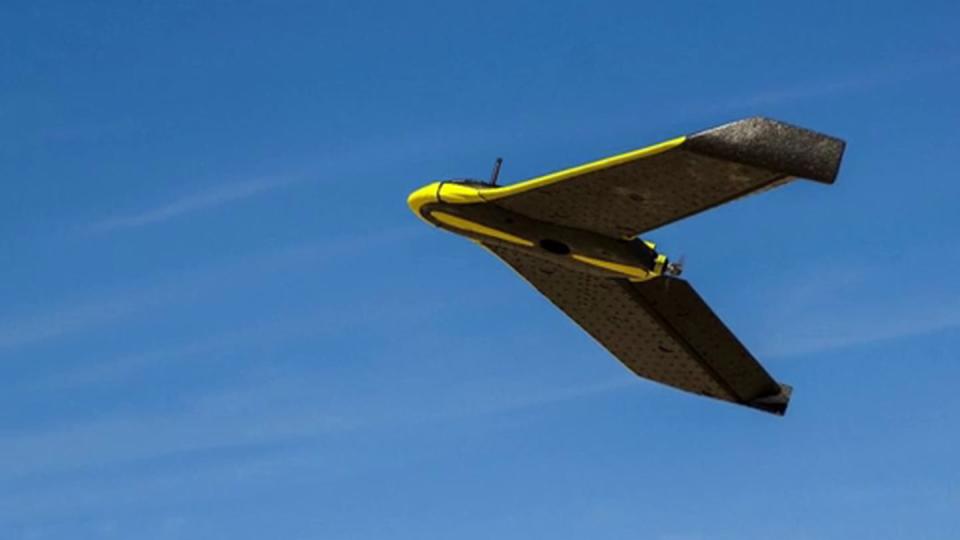Is the Army moving too fast on drone adoption?
At last month’s Association of the US Army (AUSA) conference, talk of drones was everywhere.
The Army is producing its share of the buzz with efforts to bring to life its own drone programs such as the Robotic Combat Vehicle. But, before charging ahead and pushing this program and others beyond the point of no return (putting them on production contracts), the Army should examine how well it’s taking each step along the path to autonomy.
Skipping any one of these steps, whether it be driver-assisted technology, mapping or data collection is tantamount to what Air Force Secretary Frank Kendall dubbed “acquisition malpractice.” Worse, it’ll doom these and other efforts, ceding ground to adversaries.
Army gets first high-power microwave prototype to counter drone swarms
We’re living in a golden age of drone proliferation on the battlefield. We’ve seen time and time again the use of drones in Ukraine, whether it be cheap first-person-view drones hitting Russian trenches or sea drones keeping the once mighty Black Sea Fleet at bay. Similarly, we know that Hamas is making use of drones, such as its new submarine drone. In all of these cases, drones are once again changing how militaries fight, communicate, and collect information.
With the Global Hawk, Predator, and other unmanned aerial systems in the skies above Iraq and Afghanistan, one could consider the 2000s and the 2010s the decades of the aerial drone. Since then, what has become readily apparent in both Ukraine and Israel is that we have entered the decade of the sea drone.
While drones on or under the water and in the air are seeing success, can we assume that we are on the cusp of drones conquering the ground domain too? Or is the ground domain so much more difficult (witness the problems of the self-driving car company Cruise) that the Army is a decade or two too soon? To realize the promise of the coming ground drone decade, it’s critical that the Army take small steps now in order to reap big gains later rather than shooting for the equivalent of a moon launch anytime soon.
Thankfully, there’s some recognition in the Army that autonomy might be achieved through a series of small steps. As the service’s aviation branch chief put it, “There’s a path to autonomy. It’s not that we’re not autonomous and then [suddenly] we are autonomous — it’s going to be a graduated scale, or I kind of envision it as stair steps.” This is exactly the right approach and those “stair steps” should be data collection, driver assistance technology, and mapping. Given the multiple lines of effort that the Army is pursuing towards autonomy, ensuring a common set of steps for the Army to practice is critical.
Out of the three, data collection is especially important as artificial intelligence (what will help power these autonomous platforms) depends on algorithms, which in turn depend on data. Algorithms require data to be “trained,” learning patterns and behaviors from the outside world to make decisions without human input.
To collect the data that will eventually feed the algorithms powering the drones of the coming decades, the Army should take a page from what the private sector is doing in San Francisco: testing and collecting data from ground vehicles at scale. While it’s encouraging that the Army appears to be doing this to a limited extent, it should do more and instrument and collect data off of every ground combat vehicle.
Next, the Army should engage its existing ground fleet in mapping, allowing terrain and other ground features to be learned by its fleet. The Army cannot rely on self-driving cars to map off-road terrain, no matter how good they may be in mapping the roads we drive on. Making the problem even more difficult is that terrain is constantly changing during war; just look at how much Ukraine’s terrain has been altered over the last two years of conflict. Thus, the Army must gain its own competency in mapping terrain by outfitting its fleet of wheeled and tracked vehicles with 3-D mapping technology. The instant updating of maps and algorithms’ ability to retrain during combat will become ever more important in ground operations.

Finally, the service should implement driver-assistance technology on its existing platforms where possible, allowing soldiers to benefit from technology that is now reaching maturity and, for the most part, comes standard on new commercial automobiles. Implementing this technology also serves the dual-purpose of upgrading current systems, helping to avoid costly multi-year and multi-billion dollar acquisition programs for new systems.
In short, while the Army should certainly pursue autonomous vehicles and other platforms, it should do so sequentially: step-by-step until technology and development has advanced to a point where they’re ready to be put on production contracts. Failure to follow the proper steps, whether it be data collection, mapping, or driver-assistance technology, could condemn these efforts to the Army’s acquisition graveyard.
Retired U.S. Army Maj. Gen. John Ferrari is a senior nonresident fellow at the American Enterprise Institute think tank. Ferrari previously served as a director of program analysis and evaluation for the Army. Charles Rahr is a research assistant at AEI.

